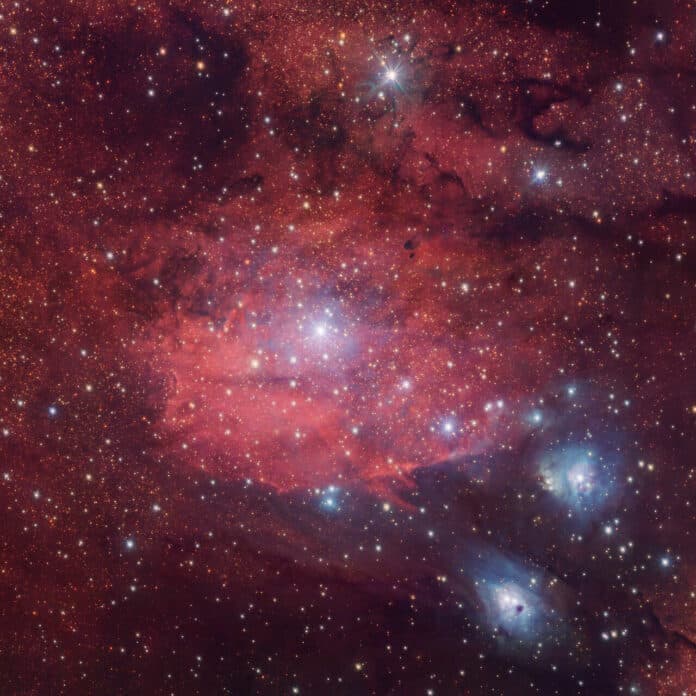Astronomers have captured two types of nebulae using the wide-field camera OmegaCAM on the VLT Survey Telescope (VST), hosted at ESO’s Paranal Observatory in the Chilean desert. Each appears with a distinct color in the visible sky.
The large, bright emission nebula at the center, IC1284, is an emission nebula located in the constellation Sagittarius. It is almost 5,540 light-years away. This deep-sky object lies very close to the Small Sagittarius Star Cloud (M24) along the plane of the Milky Way.
The hydrogen atoms’ internal electrons, stimulated by the radiation from young stars but later lose energy, give the object its rosy glow. These electrons then emit a particular color or wavelength of light. One of OmegaCAM’s filters permits this particular reddish color, giving the nebula its appearance. A different color filter highlights the blue reflection nebulae NGC6589 and NGC6590 in the lower right corner. A reflection nebula’s eerie glow is caused by the dust’s preference for scattering shorter, bluer wavelengths of light from nearby stars. The sky is low for the same reason.
This photo’s frame corresponds to the size of a full Moon in the sky. The VST Photometric H alpha Survey of the Southern Galactic Plane and Bulge (VPHAS+), a significant ESO public survey that observes nebulae and stars in visible light to aid astronomers in their understanding of how stars are born, live, and die, is the source of this image.
